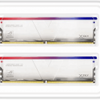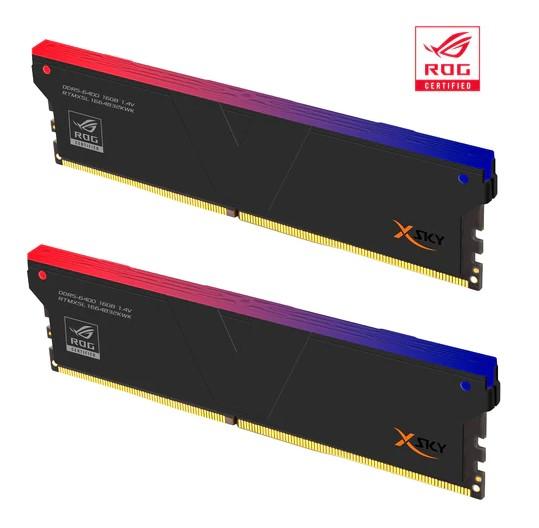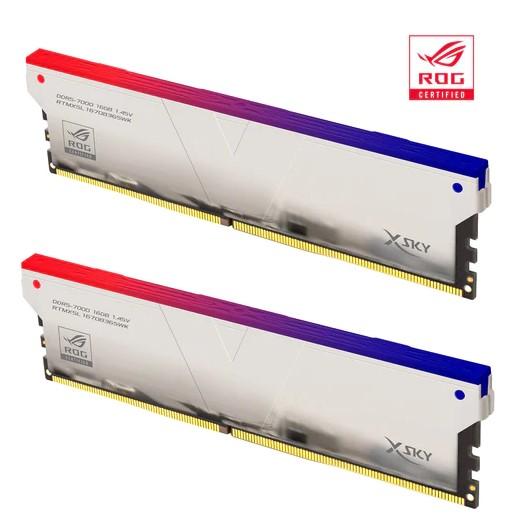Introduction
VColor Manta ROG XSky RGB 7000 CL36 32 GB(2x 16 GB)
7000 MHz CL36 32 GB (2x 16 GB)
VColor Manta ROG XSky RGB 7000 CL36 memory is the kit we will present today. It’s not the first one from that Taiwanese company on guru3d. Over a year ago, the V-Color Manta Xprism 6200 CL36 (2x16GB) was reviewed (and it earned the “Recommended” award). This time it’s the ROG-Certified series, which allows higher frequency on the Asus Maximus motherboards than on the others. The sample we’re checking is not the best of the series (but it’s close), as even the 7200 MHz CL36 is available.
A quick reminder - DDR5 is the newest technology to hit the market, make headlines, and break world records. DDR5 already set spectacular results in overclocking (of course, using the LN2), as even 10550 MHz. DDR4 RAMs operate on a single 64-bit bus, while DDR5 has two 32-bit buses (plus, in both cases, an additional 8-bit for ECC). As a result, a single module is identified as Dual Channel, while two are identified as Quad Channel. However, the solution does not match the throughput of HEDT platforms with processors with a four-channel controller. The internal (A / B) channels of DDR5 RAM also share the RCD (Register Clock Driver), which provides more output signals and more extended pulse reading (8 vs. 16). The DDR5 comes with a Power Management Integrated Circuit (PMIC) from the most important things you need to know. It’s responsible for controlling voltage changes, optimizing the energy draw, and making it less demanding for the motherboard controller. The DDR4 nominal voltage is 1.2 V; for the DDR5, it’s 1.1 V. Typical XMP voltage for the older type of memory is 1.35V (sometimes 1.45 V); now, it’s mostly 1.25 V. Speaking of the XMP, till now, it was 2.0 revision, with the introduction of the DDR5 we’ve got the rev 3.0. The main difference is that the number of profiles has increased from three to five (three for the manufacturer settings and two placeholders for the users).
After this short introduction – let’s present a bit of the review sample. There are two color variants:
- Black
- Silver (the one that is the subject of this test)
Our sample is the high-end frequency kit from the VColor Manta ROG series, with a 7000 MHz clock, CL36-46-46-105, at 1.45 V. On the Asus ROG motherboards – it’s possible to run at 7200 MHz, CL36-46-46-105 @1.45 V. As for the capacities of this family, it’s “only” 2 x 16GB kit available.
As for the frequencies, there are the following variants available:
- 6000 MHz
- 6400 MHz
- 6600 MHz
- 7000 MHz (the one shown here)
- 7200 MHz
Overall, this VColor Manta memory kit seems a good option for those looking for elegant, high-capacity, high-speed memory with RGB lighting. It’s a series with an XMP profile and the AMD EXPO. The height of the memory module is 38 mm/1.496 inches, so it’s a relatively low-profile form, which should cause rare problems with the (air) CPU coolers. As for (official) compatibility – there should be no problem with the AMD (up to 6000 MHz) and the Intel platform (at least for variants with frequencies up to 6400-6600 MHz, the higher frequency kits need the Z790 chipset). We’ll check the kit on two platforms, with Z790-based motherboards (Asus Z790 Maximus Hero) combined with the Intel Core i9 13900K and the Asrock X670E Steel Legend combined with an AMD Ryzen 9 7900X. The used GPU is the Nvidia Geforce RTX 4090, so it shouldn’t be a limiting factor for memory performance. We are traditionally going to try and squeeze something more out of it. The default parameters and visual aspects look attractive – we must check the performance then. A limited lifetime warranty backs the VColor Manta series. Ok, next page, please.





